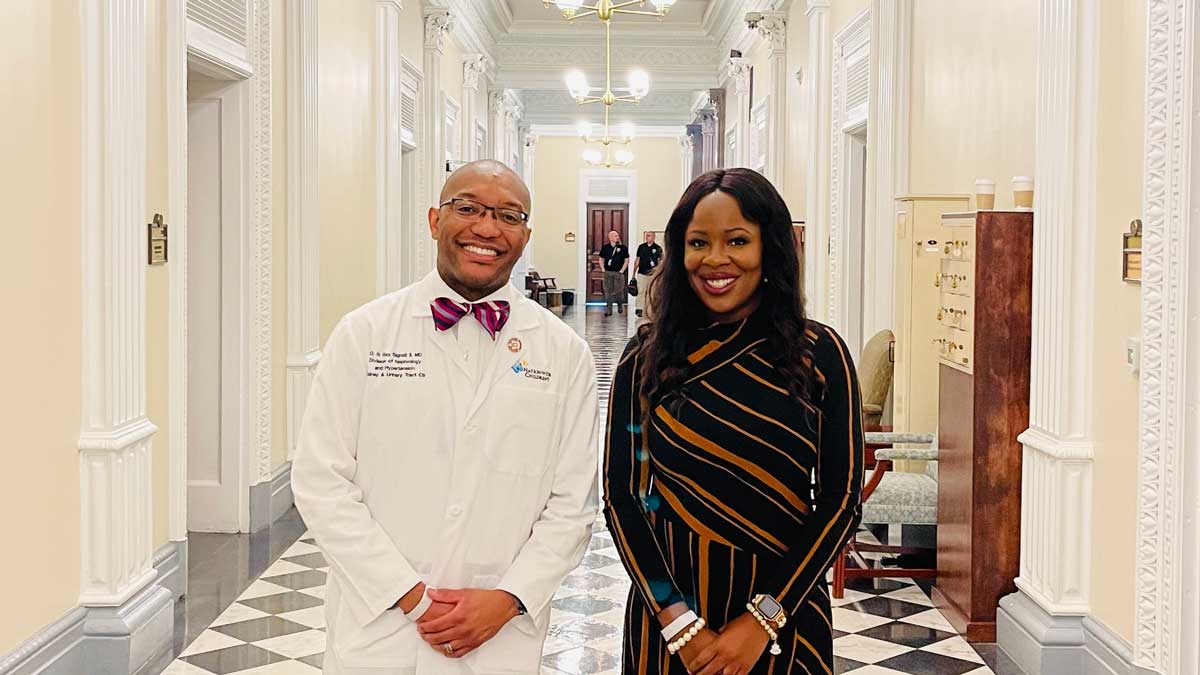Mission critical: Diversity & inclusion
 This year, as we celebrate Martin Luther King Day at The Ohio State University College of Medicine, we also celebrate our success in making diversity a critical part of our mission.
This year, as we celebrate Martin Luther King Day at The Ohio State University College of Medicine, we also celebrate our success in making diversity a critical part of our mission.
“For too long, diversity has been treated as an adjacent goal to a mission,” says Demicha Rankin, MD, associate dean for Admissions for Ohio State College of Medicine. “But at Ohio State, diversity serves as a driver of institutional excellence and is integral to our success.”
Dr. Rankin believes that diversity and inclusion must be a core, integrated principle, not just a goal. “It’s something we practice every day in our student body, faculty and leadership,” she says. “While we strive for diversity in ethnicity, race, sex, gender identity, religious background, socioeconomic status and other factors, it is truly about added perspectives and working collectively. Our goal is to ensure we have highly qualified, diverse students to train a physician workforce capable of addressing healthcare disparities and embarking on healthcare research.”
When the Association of American Medical Colleges released its 2019 study on diversity, it acknowledged that diversity in medical schools continues to grow, but schools must remain focused on underrepresented groups, including women, African Americans, Asians and Hispanics/Latinos.
A student body with racial and ethnic diversity helps prepare medical students to meet the needs of a diverse population. When classes are more diverse, students gain a broader perspective, improving empathy and racial understanding — critical components of a physician’s education.
Here’s how Ohio State College of Medicine rates in terms of diversity and inclusion in its 2019 incoming class:
- More than half of the 209 incoming students are women (112 in 2019, up from 97 in 2014).
- One-quarter of the incoming class is from underrepresented groups (50 students in 2019, up from 37 in 2014).
In addition, Ohio State College of Medicine was ranked No. 2 for the highest percentage of African American students in medicine in the United States by U.S. News & World Report (excluding historically black colleges and universities).
“The number of women and underrepresented students in medicine has increased,” Dr. Rankin says. “I believe this is due in part to the fact that Ohio State made diversity a core principle of its mission. We want to be inclusive of everyone.”
Connecting with our patients
The college’s focus on diversity contributes to a physician workforce that is reflective of patients they treat. Studies show students trained at diverse schools are more comfortable treating patients from a range of ethnic backgrounds. And patients report a greater level of satisfaction with their care when they’re treated by physicians with similar ethnic backgrounds.
As an anesthesiologist, African American woman, and Ohio State College of Medicine graduate, Dr. Rankin has experienced this response in her patients. “When I walk in and an African American patient sees me — someone who looks like them — they feel like they can relate to me, that we have a connection,” Dr. Rankin says. “I have been explicitly told by some of my older African American patients that they are proud to see me as their doctor.”
Preparing our medical students
To further embrace diversity and inclusion, the Ohio State College of Medicine’s Medical Careers Pathway Post Baccalaureate Program (MEDPATH) helps better prepare students from underrepresented groups for medical school.
Each year, MEDPATH accepts about 15 students, many from underrepresented backgrounds or from socioeconomically disadvantaged backgrounds who show a commitment to practice in an underserved community. These students agree to take additional undergraduate classes and meet specific criteria before matriculating into the Ohio State College of Medicine.
In the end, diversity is about making sure that all backgrounds, beliefs, ethnicities and perspectives are represented in the medical field. This starts with a diverse and inclusive student body and physician workforce that provides the best possible care for all patients.
“We are proud of our focus on diversity and inclusion at the College of Medicine,” Dr. Rankin says. “Ohio State is making strides in creating a culture of diversity and helping our students provide quality care for all patients.”



